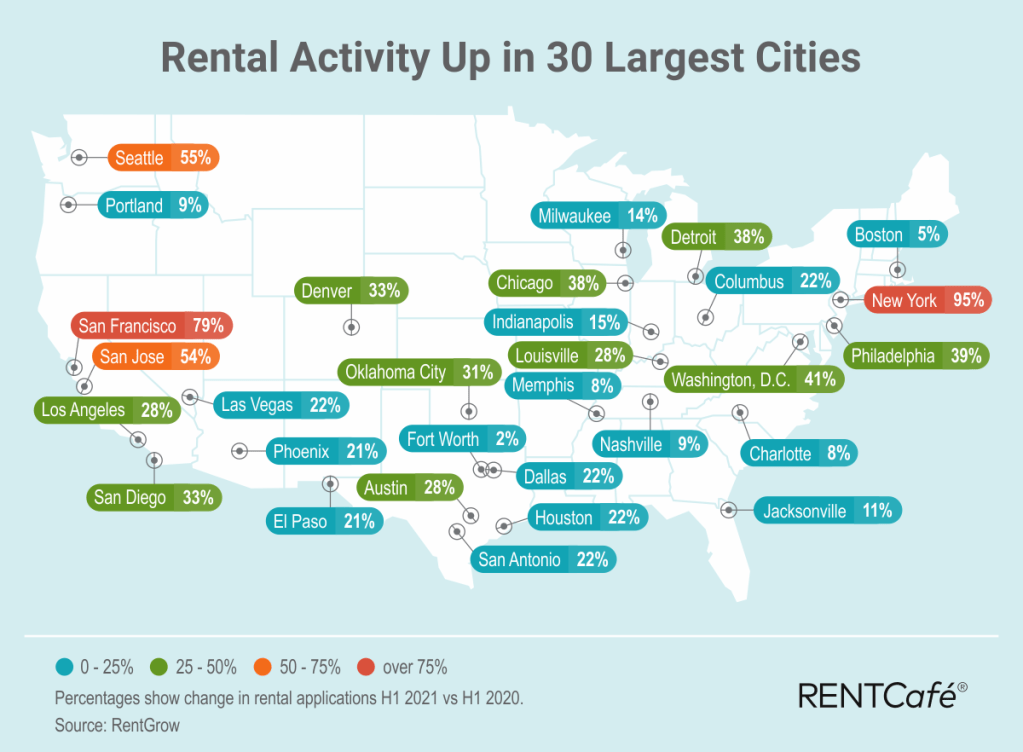In an analysis of 2.5 million renter applications nationwide sourced from RentGrow, RENTCafé has determined that renting activity has returned to pre-pandemic levels, up 13% in 2021 from one year ago.
The “peak rental season” was twice as strong as usual, with 45% more renters applying for apartments in March than in February. By comparison, applications rose by 23% over the same period in 2018 and 2019, while 2020’s rental season was highly atypical, starting in May and ending much sooner than usual.
RENTCafé attributes this year’s active application season to rising vaccination rates, a recovering job market, and an increase in household savings. Surveys reveal the opportunity to get a better deal was the main reason for moving.
Based on an analysis of rental applications by age groups nationwide, the main proponents of rising rental activity are members of Generation Z—the generation born between 1997 and 2012—whose rental applications are up 39% from the previous year. Applications from other age groups rose by 10% or less. The youngest generation makes up 27% of the nation’s apartment hunters and is the only section that is growing. Millennials make up the largest share of active renters at 45%, down 8% since last year.
Considering renters by income, renters earning more than $100,000 were the most active this year, up 34% from the first half of 2020, followed by renters earning between $75,000 and $100,000, up 33% from the same period. A need for larger living spaces to accommodate working from home as the primary reason for moving, while the highly competitive real estate market may have encouraged some high-income renters to continue to rent.
Interest in big-city apartments is back on the rise. Rental applications rose in all 30 of the nation’s largest cities. New York City saw the most dramatic comeback, with 95% more applications in the first half of 2021 than in the first half of 2020, followed by San Francisco, with 79% more applications. Seattle and San Jose, California, were also top performers at 55% and 54%, respectively. These rates include movement within the city and movement into the city from elsewhere.
